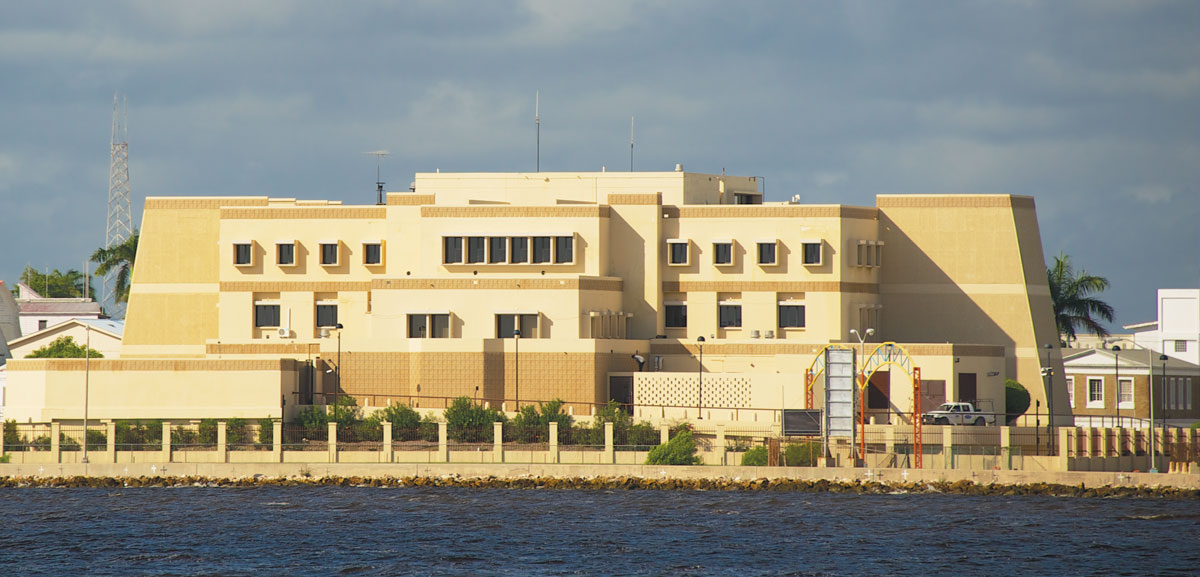
As the only English speaking country in Central America, Belize’s history is unique to its Central American counterparts. While the Mayans, the country’s first inhabitants date back to Prehistoric times, The Spanish first arrived in the mid 1500’s. Despite their attempts to occupy the territory, the relentless resistance from the Mayans along with the arrival of British Logwood settlers in the mid 1700’s, made their attempts to consolidate their presence futile. The lost naval battle of 1798 marked the Spaniards last serious attempt to gain control over Belize. In 1862, after increasing their control on the territory due to their Logwood interests, the British declared Belize a British Colony, giving it the name British Honduras. Belize remained a British Colony until gaining its independence in 1981.

Belize enjoys a melting pot of races whose collective cultures help to form the unique nation that we claim to be. The main ethnic groups in Belize consists of the Mestizo (Hispanic Descent), the Creole, the Garifuna and the Maya. Other groups that form a part of our citizenry include the Mennonites, East Indians, Chinese and European, and American settlers.
The Official Language of the country is English, with Spanish being the second language. Other languages spoken include Creole as a local dialect, Garifuna, and Mandarin.

The government and legal system is modeled on the Westminster system. Despite being independent since 1981, Belize remains a part of the British Commonwealth in which the Queen of England is the nominal head of state and is represented locally by the Governor General. The Prime Minister is the head of government who along with his Cabinet, form the executive branch of the government. The legislature includes an elected House of Representatives and an appointed Senate. An independent judiciary includes the Supreme Court with a Chief Justice, as well as magistrate courts. Belize marvels as a passive and democratic nation.

Located on the Caribbean coast of Central America, Belize is a melting pot of cultures and ethnicity, drawn from English, African, Latin, Mayan, and Caribbean ancestry. The country consists of approximately 8,866 square miles of land and shares borders with Mexico in the North, Guatemala to the West and South, and by the Caribbean Sea on the East. The Belize Barrier Reef, the second largest in the world, runs parallel to our coast, and consists of over 120 offshore Cayes (Islands), most of which are uninhabited. Rated as one of the best Dive Destinations in the world, it is no surprise that the Barrier Reef is arguably the country’s most cherished natural resource.
The climate can be described as being sub-tropical, with temperatures ranging from 50 Degrees Fahrenheit in the hills and higher elevations to 95 Degrees Fahrenheit in coastal areas. The Humidity, while high, is tempered by cool trade winds with November to January being the coolest months, while May to September are the warmest. The Dry Season usually extends from November to May, while the Rainy Season runs from June to October. Belize also sits within the Hurricane Belt, making it susceptible to the annual threat of tropical cyclones.

The economy of Belize is multi-faceted, with major sectors being Agriculture (Citrus, Sugar, & Bananas), Fisheries, Financial & Trade, and Tourism, the latter of which is the greatest revenue earner for the county.
- + History
-

As the only English speaking country in Central America, Belize’s history is unique to its Central American counterparts. While the Mayans, the country’s first inhabitants date back to Prehistoric times, The Spanish first arrived in the mid 1500’s. Despite their attempts to occupy the territory, the relentless resistance from the Mayans along with the arrival of British Logwood settlers in the mid 1700’s, made their attempts to consolidate their presence futile. The lost naval battle of 1798 marked the Spaniards last serious attempt to gain control over Belize. In 1862, after increasing their control on the territory due to their Logwood interests, the British declared Belize a British Colony, giving it the name British Honduras. Belize remained a British Colony until gaining its independence in 1981.
- + Culture
-

Belize enjoys a melting pot of races whose collective cultures help to form the unique nation that we claim to be. The main ethnic groups in Belize consists of the Mestizo (Hispanic Descent), the Creole, the Garifuna and the Maya. Other groups that form a part of our citizenry include the Mennonites, East Indians, Chinese and European, and American settlers.
The Official Language of the country is English, with Spanish being the second language. Other languages spoken include Creole as a local dialect, Garifuna, and Mandarin.
- + Governance
-

The government and legal system is modeled on the Westminster system. Despite being independent since 1981, Belize remains a part of the British Commonwealth in which the Queen of England is the nominal head of state and is represented locally by the Governor General. The Prime Minister is the head of government who along with his Cabinet, form the executive branch of the government. The legislature includes an elected House of Representatives and an appointed Senate. An independent judiciary includes the Supreme Court with a Chief Justice, as well as magistrate courts. Belize marvels as a passive and democratic nation.
- + Geography
-

Located on the Caribbean coast of Central America, Belize is a melting pot of cultures and ethnicity, drawn from English, African, Latin, Mayan, and Caribbean ancestry. The country consists of approximately 8,866 square miles of land and shares borders with Mexico in the North, Guatemala to the West and South, and by the Caribbean Sea on the East. The Belize Barrier Reef, the second largest in the world, runs parallel to our coast, and consists of over 120 offshore Cayes (Islands), most of which are uninhabited. Rated as one of the best Dive Destinations in the world, it is no surprise that the Barrier Reef is arguably the country’s most cherished natural resource.
The climate can be described as being sub-tropical, with temperatures ranging from 50 Degrees Fahrenheit in the hills and higher elevations to 95 Degrees Fahrenheit in coastal areas. The Humidity, while high, is tempered by cool trade winds with November to January being the coolest months, while May to September are the warmest. The Dry Season usually extends from November to May, while the Rainy Season runs from June to October. Belize also sits within the Hurricane Belt, making it susceptible to the annual threat of tropical cyclones.
- + Economy
-

The economy of Belize is multi-faceted, with major sectors being Agriculture (Citrus, Sugar, & Bananas), Fisheries, Financial & Trade, and Tourism, the latter of which is the greatest revenue earner for the county.

